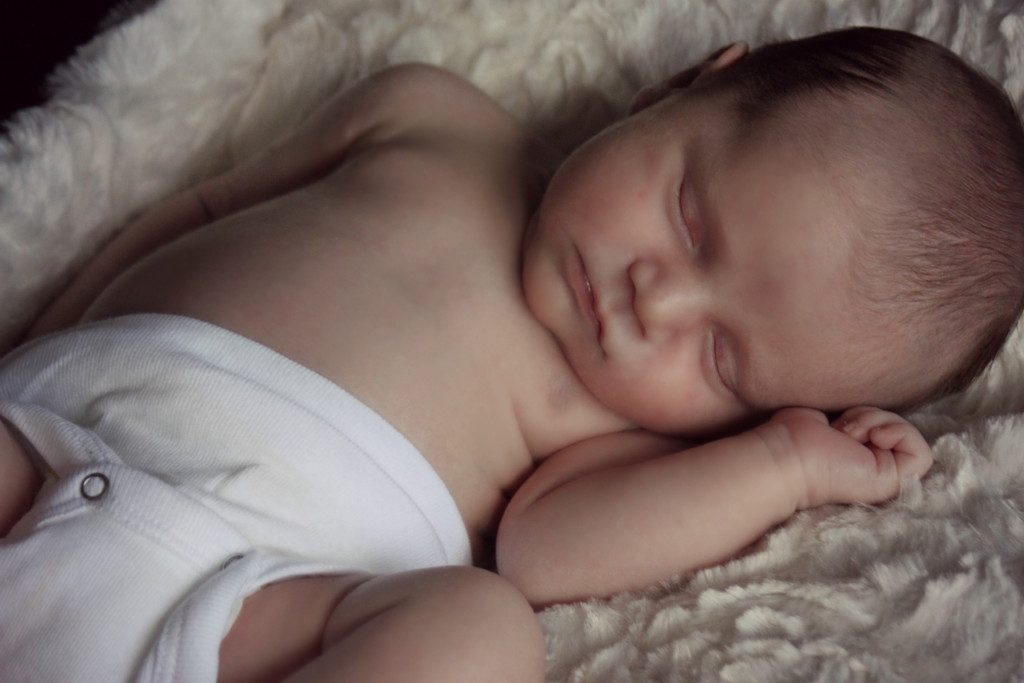Should I Help If Baby Looks Uncomfortable?
One of the main end goals of sleep training is that your child will become an independent sleeper by developing the ability to fall asleep on their own. In order for this to happen you need to allow them time to learn and not always interfere. This can cause a conundrum when your child has themselves in an uncomfortable looking position. “Should I or shouldn’t I” intervene at this moment and help my baby?
This happens predominantly to babies who have been either rocked or nursed to sleep in mommy’s arms and are then put into their crib already asleep. It may seem a little odd, but this is typically because they haven’t learned that they need to lie down in order for sleep to come easily.
After all, up until they start the program, babies have been held in a certain position in their parents’ arms, so this is all they know. They’re held in a nice, comfortable pose until they fall asleep, and then they wake up in their crib.
This can lead to babies falling asleep in some pretty amusing positions when they start learning how to sleep independently and they try to discover what sort of position they need to get into to get to sleep. Many will fall asleep sitting up, or even while they’re standing up, after a little time spent exploring their crib.
It also depends on what age they are and what milestones they are practicing when sleep training takes place. When I sleep trained my daughter, she was just discovering that she could pull herself up to stand in her crib, but she wasn’t able to get back down as easily. This was very tough to watch as she would sometimes fall since she was so tired and she didn’t realize she needed to lay down. I did try several times to assist and lay her down, but this seemed to only upset her more. She eventually figured things out and she usually sleeps curled up in her crib.
So what do you do? Clearly, priority number one with any baby is safety, so yes, you should absolutely go in and lie your baby on their back if they fall asleep in a position that’s not safe for them.
“But won’t that wake them up and send the whole process back to square one?” you may be asking.
Well, yes and no. There’s a good chance baby might wake up and want to interact with you, but if you lay them down and reassure them that’s it’s still time for sleep, then promptly leave the room, chances are they’ll find their way back to sleep before long. It’s not ideal, but it’s better than risking them falling over.
This literally just happened with my 18-month-old during her nap yesterday. She is on one nap now but was a little overtired from the extra activities over the weekend. She cried and didn’t want to lay down and go to sleep, this is rare for her, but again the overtiredness had kicked in. She was so tired that she actually fell asleep standing up holding onto the crib! I waited a few minutes, nervous that she would fall, and decided to try and lay her down. This completely backfired and upset her more, but I had to try.
What about those times when they manage to wiggle their way into the corner of their crib? There are times when baby might not be in a dangerous sleeping position, per say, but just one that looks really uncomfortable.
Well, what may seem uncomfortable looking to us adults, might be super comfortable to a baby. The most common scenario I see is babies lying against the edge of their crib, which we equate with sleeping against a wall, which is not something most adults are terribly fond of.
But babies do seem to like to sleep while pushed up against something. It may be for a sense of security, or a feeling of being next to someone, but whatever the reason, they do seem to gravitate towards some kind of a surface to sleep against.
And if they do end up a little smushed up against the side of their crib, or curled up into the corner, your best bet is to let them sleep.
Again, our number one concern is safety, so if baby has a limb hanging between the bars of the crib or has gotten into a position that might make it difficult to breathe, go ahead and reposition them. Just remember to make it as quick and quiet as possible, and don’t linger any longer than you need to in order to get them back into a safe sleeping position.
As for what to do when your partner or spouse is snoring or hogging the covers, you need to decide how to handle that one!

